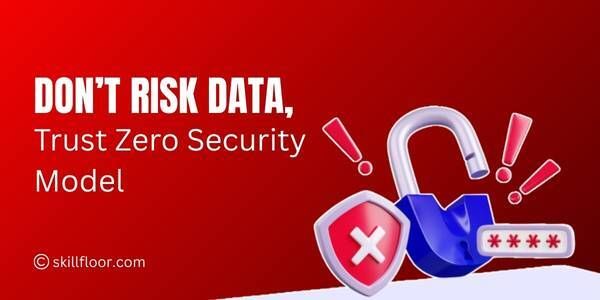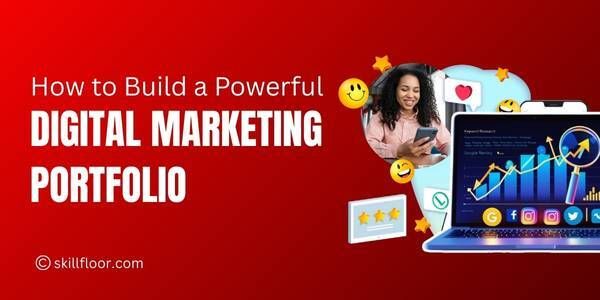TABLE OF CONTENT:
-
Applications of data analytics
-
Data analytics uses
-
Importance of data analysis
-
Data analysis types
-
Data analytics technologies
-
Big data techniques
-
Data analytics course syllabus
-
Data analytics in business
-
Industry wise of data analysis and interpretation
-
The future of big data analytics
Data analytics courses provide individuals with the knowledge and skills to effectively analyze and interpret large volumes of data to derive meaningful insights and make data-driven decisions. These courses cover a wide range of topics, including data collection and preparation, data visualization, statistical analysis, machine learning, and data storytelling.
The goal of data analytics courses is to equip students with the necessary tools and techniques to extract valuable information from complex datasets and transform it into actionable insights. Students learn how to use various software tools, programming languages (such as Python or R), and data manipulation techniques to clean, preprocess, and analyze data. They also gain expertise in visualizing data through charts, graphs, and interactive dashboards to effectively communicate findings.
Furthermore, data analytics courses often delve into statistical analysis methods, enabling students to identify patterns, correlations, and trends in data. They learn how to apply descriptive and inferential statistics, hypothesis testing, and regression analysis to draw meaningful conclusions and make data-driven predictions.
Machine learning is another crucial aspect covered in data analytics courses. Students learn different machine learning algorithms, such as classification, regression, clustering, and recommendation systems, and understand how to apply them to solve real-world problems. They gain hands-on experience in training models, evaluating their performance, and using them to make predictions or uncover hidden patterns in data.
Data storytelling is an essential skill taught in data analytics courses, emphasizing the ability to effectively communicate insights and findings to non-technical stakeholders. Students learn how to craft compelling narratives, create visually appealing data visualizations, and present their findings in a clear and concise manner.
Overall, data analytics courses provide a comprehensive foundation in data analysis techniques, statistical methods, machine learning, and data visualization. They equip individuals with the skills needed to extract valuable insights from data, make informed decisions, and contribute to data-driven strategies in various industries and domains.
1. Applications of Data Analytics
Data analytics finds applications across various industries and domains, revolutionizing how organizations operate and make informed decisions. In marketing, data analytics helps companies understand customer behavior, target specific demographics, and optimize marketing campaigns. In finance, it aids in risk assessment, fraud detection, and investment analysis. In healthcare, data analytics enhances patient outcomes through predictive analytics, personalized medicine, and healthcare management. Supply chain and logistics benefit from data analytics by optimizing inventory management, demand forecasting, and route optimization.
Additionally, data analytics plays a crucial role in sports analytics, social media analytics, cybersecurity, customer relationship management, and many other areas. The applications of data analytics are vast and continue to expand as organizations recognize the potential for leveraging data to drive efficiency, innovation, and competitive advantage.
2. Data Analytics Uses:
-
Identifying trends and patterns in large datasets
-
Making data-driven decisions and recommendations
-
Optimizing business operations and processes
-
Improving customer targeting and segmentation
-
Enhancing marketing and advertising strategies
-
Detecting and preventing fraud or anomalies
-
Predicting and forecasting future outcomes
-
Improving product and service offerings based on customer feedback
-
Evaluating and optimizing pricing strategies
-
Enhancing risk assessment and management
-
Improving healthcare outcomes and patient care
-
Streamlining supply chain and logistics operations
-
Enhancing cybersecurity and data protection measures
-
Enhancing sports performance analysis and team strategies
-
Improving energy efficiency and resource allocation
-
Enabling personalized recommendations and experiences for users
-
Supporting strategic planning and decision-making at all levels of an organization.
3. Importance of Data Analysis
Data analysis is of utmost importance in today's data-driven world. It allows organizations and individuals to extract valuable insights from vast amounts of data, leading to better decision-making, improved strategies, and enhanced performance.
Data analysis helps in understanding patterns, trends, and correlations within the data, enabling businesses to identify opportunities, mitigate risks, and optimize processes. It provides a deeper understanding of customer behavior, preferences, and needs, allowing organizations to tailor their products and services to meet specific demands.
By uncovering hidden insights and relationships in data, analysis facilitates evidence-based decision-making, reducing guesswork and intuition-driven choices. It provides a solid foundation for strategic planning, resource allocation, and goal setting, enabling organizations to allocate their efforts and resources effectively.
Data analysis also plays a vital role in identifying and addressing inefficiencies and bottlenecks in various operations, leading to increased productivity and cost savings. It aids in the detection of anomalies, errors, and fraudulent activities, helping organizations maintain integrity and security in their processes.
Furthermore, data analysis fosters innovation and drives continuous improvement. It provides a feedback loop for evaluating the performance of strategies, products, and initiatives, enabling organizations to refine their approaches and optimize outcomes.
In fields like healthcare, data analysis can lead to significant advancements in disease detection, treatment efficacy, and patient care. It enables researchers to uncover new insights, develop predictive models, and make breakthrough discoveries.
4. Data AnalysisTypes
Data analysis encompasses various types, each serving a specific purpose in extracting insights and drawing conclusions from data.
Descriptive analysis involves summarizing and interpreting data to understand its basic characteristics. It includes measures such as mean, median, mode, standard deviation, and graphical representations like histograms or bar charts. Descriptive analysis provides a clear overview of the data, enabling a better understanding of its distribution, central tendencies, and variability.
Inferential analysis goes beyond descriptive statistics and involves drawing conclusions or making predictions about a larger population based on a sample. It uses techniques like hypothesis testing, confidence intervals, and regression analysis to make inferences and generalize findings to the broader population.
Diagnostic analysis aims to understand the cause and effect relationships within the data. It involves investigating relationships between variables, conducting root cause analysis, and identifying factors that contribute to specific outcomes. Diagnostic analysis helps uncover insights into the underlying factors that drive certain behaviors or outcomes
Predictive analysis utilizes historical data and statistical modeling techniques to make predictions about future events or outcomes. It involves using algorithms such as regression, decision trees, or neural networks to identify patterns and relationships in the data and make predictions or forecasts.
Prescriptive analysis goes a step further by providing recommendations or optimal solutions based on the analysis of past data. It considers various possible outcomes and suggests the best course of action to achieve desired results. Prescriptive analysis often involves optimization algorithms, simulation techniques, or artificial intelligence-based decision-making models.
Exploratory analysis is an open-ended approach used to discover patterns, trends, and relationships in the data. It involves visual exploration, data mining techniques, and unsupervised learning algorithms to uncover insights that were previously unknown or unexplored.
Each type of data analysis serves a unique purpose and provides valuable insights into different aspects of the data. By combining these types and employing appropriate analysis techniques, data analysts and scientists can derive meaningful conclusions, make informed decisions, and drive impactful outcomes.
5. Data AnalyticsTechnologies
Data analytics technologies play a crucial role in enabling efficient and effective analysis of large and complex datasets. These technologies encompass a range of tools and platforms designed to handle various aspects of data analytics.
Data storage and processing technologies, such as relational databases, NoSQL databases, and data warehouses, provide the foundation for storing and managing vast amounts of data. They offer efficient data retrieval and querying capabilities, ensuring quick access to the required information for analysis.
Big data technologies, such as Apache Hadoop and Apache Spark, are specifically designed to handle and process massive volumes of structured and unstructured data. These technologies enable distributed computing and parallel processing, allowing organizations to analyze and derive insights from large-scale datasets.
Data integration and ETL (Extract, Transform, Load) tools facilitate the process of combining data from multiple sources, transforming it into a consistent format, and loading it into a target system for analysis. These tools streamline the data preparation stage and ensure data quality and integrity.
Statistical analysis software, such as R and SAS, provide a comprehensive suite of statistical functions and algorithms for conducting advanced data analysis. These tools offer a wide range of capabilities, including hypothesis testing, regression analysis, clustering, and time series analysis.
Data visualization tools, such as Tableau, Power BI, and D3.js, enable the creation of interactive and visually appealing charts, graphs, and dashboards. These tools make it easier to present and communicate complex data analysis results in a visually understandable manner.
Machine learning frameworks and libraries, such as scikit-learn, TensorFlow, and PyTorch, empower data analysts and scientists to build and deploy machine learning models for predictive analytics. These frameworks provide a wide range of algorithms and tools for tasks like classification, regression, clustering, and natural language processing.
Cloud computing platforms, such as Amazon Web Services (AWS) and Microsoft Azure, offer scalable and cost-effective infrastructure for storing and processing data. These platforms provide a range of analytics services and tools, including data lakes, data pipelines, and serverless computing, enabling organizations to leverage cloud resources for their data analytics needs.
The integration of these technologies allows organizations to harness the power of data analytics at scale. By utilizing these tools and platforms, businesses can efficiently analyze data, derive actionable insights, and make data-driven decisions that drive innovation, optimize operations, and unlock new opportunities.
6. Big DataTechniques
Big data techniques are specifically designed to handle and process large volumes of structured and unstructured data that traditional data processing methods struggle to manage efficiently. These techniques encompass a range of approaches and tools that enable organizations to extract valuable insights and derive meaningful conclusions from massive datasets.
One of the key techniques used in big data analytics is distributed computing. Distributed computing frameworks, such as Apache Hadoop and Apache Spark, allow for parallel processing and distributed storage of data across clusters of computers. This enables efficient processing of data in a distributed manner, significantly reducing the time required for analysis.
Another important technique is data partitioning and sharding. In big data scenarios, data is often divided into smaller partitions or shards, allowing for parallel processing of subsets of the data. Partitioning enables efficient distribution of data across different nodes in a cluster, facilitating faster processing and analysis.
Data compression is another technique used to optimize big data storage and processing. By compressing data, organizations can reduce storage requirements and minimize data transfer times, enabling faster data access and analysis. Various compression algorithms and techniques are employed to strike a balance between data size reduction and computational overhead.
Data indexing is a technique used to improve the speed and efficiency of data retrieval in big data systems. Indexing structures, such as B-trees or hash indexes, enable faster lookup and retrieval of specific data subsets, facilitating efficient querying and analysis of large datasets.
Machine learning algorithms and techniques are also widely used in big data analytics. These algorithms are applied to large datasets to uncover patterns, make predictions, and extract insights. Machine learning on big data often involves distributed computing frameworks to handle the computational requirements and scalability.
Real-time stream processing is another important technique in big data analytics. With the increasing influx of streaming data from sources such as sensors, social media, or IoT devices, real-time processing techniques allow organizations to analyze and respond to data as it arrives, enabling immediate insights and actionable decisions.
Additionally, big data techniques involve data governance and data quality management. Ensuring data integrity, consistency, and security are essential for successful big data analytics. Techniques such as data profiling, data cleansing, and data validation help maintain data quality and reliability throughout the analytics process.
7. Data Analytics Course Syllabus:
The data analytics course syllabus is designed to provide students with a comprehensive understanding of the principles, techniques, and tools used in data analysis. The syllabus typically covers a range of topics, including:
-
Introduction to Data Analytics: An overview of data analytics, its importance, and its applications in various industries.
-
Data Collection and Preparation: Techniques for collecting, cleaning, and organizing data to ensure its quality and reliability for analysis.
-
Data Exploration and Visualization: Methods for exploring and visualizing data to identify patterns, trends, and relationships.
-
Descriptive Analytics: Techniques for summarizing and describing data using measures of central tendency, dispersion, and graphical representations.
-
Inferential Analytics: Statistical methods for making inferences and drawing conclusions from data, including hypothesis testing and confidence intervals.
-
Predictive Analytics: Techniques for building predictive models to forecast future outcomes based on historical data, such as regression analysis and time series forecasting.
-
Prescriptive Analytics: Methods for optimizing decision-making processes using mathematical modeling and optimization algorithms.
-
Machine Learning: Introduction to machine learning algorithms and techniques, including supervised and unsupervised learning, classification, clustering, and recommendation systems.
-
Big Data Analytics: Overview of technologies and methodologies used for analyzing large and complex datasets, including distributed computing frameworks like Hadoop and Spark.
-
Ethical Considerations: Discussion of ethical issues related to data analytics, such as privacy, security, and bias, and the importance of responsible data handling.
-
Data Visualization Tools: Introduction to popular data visualization tools and software, such as Tableau, Power BI, and Python libraries like Matplotlib and Seaborn.
-
Case Studies and Projects: Practical application of data analytics concepts through hands-on projects and case studies, allowing students to apply their knowledge to real-world scenarios.
8. Data Analytics in Business
Data analytics has become an essential component of modern business strategies, providing organizations with valuable insights to drive decision-making and improve overall performance. By leveraging data analytics, businesses can gain a deeper understanding of their operations, customers, and market dynamics, leading to enhanced efficiency, competitiveness, and profitability.
One key application of data analytics in business is customer analytics. By analyzing customer data, businesses can gain insights into customer behavior, preferences, and buying patterns. This information enables personalized marketing campaigns, targeted promotions, and tailored product offerings, resulting in improved customer satisfaction and increased sales.
Operational analytics is another crucial area where data analytics plays a significant role. Organizations can analyze operational data to identify inefficiencies, streamline processes, and optimize resource allocation. This can lead to cost savings, improved productivity, and enhanced operational performance.
Data analytics also supports strategic decision-making by providing insights into market trends, competitor analysis, and industry dynamics. By analyzing market data and consumer trends, businesses can identify new opportunities, adapt their strategies, and stay ahead of the competition.
Risk management is another critical aspect of data analytics in business. By analyzing historical data and identifying patterns, organizations can assess and mitigate risks effectively. This includes fraud detection, credit risk assessment, and compliance monitoring, among others. Data analytics helps businesses proactively identify potential risks and take appropriate actions to minimize their impact.
Furthermore, data analytics enables organizations to monitor and evaluate the performance of their marketing campaigns, sales activities, and overall business operations. By tracking key performance indicators (KPIs) and conducting data-driven performance analysis, businesses can identify areas for improvement and make data-backed decisions to drive growth.
9. Industry wise Data An
Related Posts
Data Analytics for MBA Students: Career Benefits
Discover how data analytics can transform an MBA career, boosting employability,...
Free Data Analytics Courses That Give Real Skills and C...
Build job-ready data analytics skills for free. Access beginner courses with cer...
Future of Data Analytics Jobs in the Age of AI
Discover how AI is transforming data analytics jobs, the essential skills to thr...
Data Analyst Career Scope Growing in Coimbatore
Discover why Coimbatore is becoming a fast-growing hub for data analyst careers ...
Easy Guide to Data Analytics for IoT
Discover an easy guide to IoT data analytics and learn how to transform raw devi...
Is Data Analytics a Good Career?
Wondering if data analytics is a good career? Learn how it can help you grow, th...
Data Analyst Interview Questions and Answers: A Complet...
Prepare for your 2025 data analyst interview with 30 key questions, detailed ans...
Visualization in Data Analytics: Turn Insights into Action
Discover how data visualization in data analytics helps turn complex numbers int...
Understanding the Components of Business Analytics
Discover the key components of business analytics and how they help businesses u...
Top 10 Data Analytics Jobs for Freshers in India
Discover the top 10 data analytics jobs for freshers in India. Explore roles, sk...
The Role of Data Analytics in Banking Industry
Learn how data analytics in the banking industry helps banks understand customer...
The Role of Data Analytics in Human Resources
Discover the role of Data Analytics in Human Resources, helping HR teams make sm...
Top 10 Data Analytics Tools
Explore the top 10 data analytics tools to organize, visualize, and understand y...
AI Data Analytics: A Beginner’s Guide
Explore AI data analytics for beginners. Learn to understand data, spot patterns...
Beginner’s Guide to Financial Data Analytics
Learn the basics of Financial Data Analytics. Explore key concepts, tools, and a...
What is Exploratory Data Analysis?
Learn what Exploratory Data Analysis (EDA) is, why it matters in 2025, and how t...
Scope of Hr Analytics
The scope of HR analytics in modern organizations. Learn how data-driven HR deci...
Understanding the Applications of Big Data Analytics
Explore key applications of big data analytics in business, healthcare, finance,...
8 Essential Data Mining Tools for Modern Data Analysts
Explore 8 top data mining tools of 2025 like RapidMiner & Spark. Compare feature...
Business Analyst vs Data Analyst
Compare roles, skills, and career paths of Business Analysts vs Data Analysts to...








































































